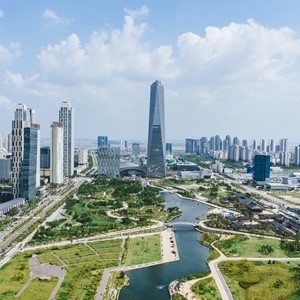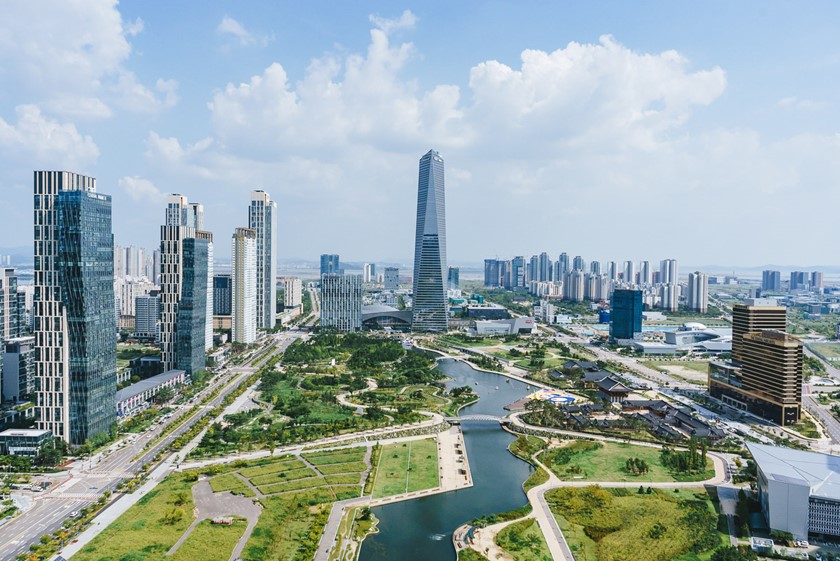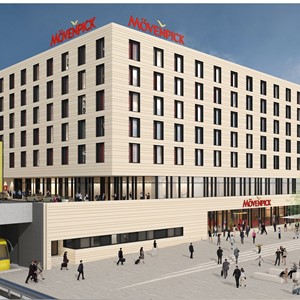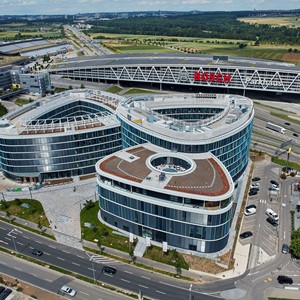
Airport Cities: Die Zentren der Zukunft
A well-connected airport is not only a traffic hub, but also the engine of regional economic development. Just as lively urban quarters once developed around the large railway stations, new business centres are now emerging at airports in the form of airport cities. After all, many airports are not only sought-after locations for companies.

A well-connected airport is not only a traffic hub, but also the engine of regional economic development. Just as lively urban quarters once developed around the large railway stations, new business centres are now emerging at airports in the form of airport cities. After all, many airports are not only sought-after locations for companies.
"Today's airports have a similar function as the large train stations or seaports used to have. This statement, which is increasingly cited in the meantime, comes from the US economist John Kasarda, one of the world's leading experts on airport infrastructure and director of the Center for Air Commerce at the University of North Carolina. His views have long been in demand around the world, in Mexico and China as well as in the Netherlands and Germany. He has seen airports as "the economic engines of the 21st century" since the 1990s. With increasing globalization, according to the scientist, aviation is mutating into the logistical backbone of the economy.
Airports will shape business location and urban development in the 21st century as much as highways did in the 20th century, railroads in the 19th and seaports in the 18th"
John D. Kasarda
To make his visions tangible, Kasarda coined the term "Aerotropolis" early on, a city with an airport as a fixed point. In his book "Aerotropolis: The Way We'll Live Next," he describes how he envisions these centers of the future. In the direct vicinity of the air traffic hubs, economic zones and residential areas are formed that can be reached by means of so-called "aerolanes", i.e. highways. Residents have unrestricted access to all facilities needed for daily needs, including medical care and local recreation.
In many ways, the Aerotropolis designed by John Kasarda is similar to traditional cities. With one crucial difference: the city center is the airport. Kasarda sees this as a logical development, as speed and mobility are the driving forces of the modern economy and airports are the fastest way to participate in global trade flows. An airport is thus the ideal foundation stone for a new city.
In fact, cities have always been built along major trade routes, such as rivers and railways. For example, the so-called technology axis south, i.e. the area between Karlsruhe, Stuttgart, Ulm, Augsburg and Munich, is one of the regions with the highest economic and innovative power in the whole of Europe. The trans-European Paris-Vienna-Budapest main line has played a major role in this development, and with the current expansion of the Stuttgart railway junction, the construction of the airport railway station and the new line to Ulm, it will become even more efficient.
The location at Stuttgart Airport, which with the expansion of the new infrastructure and the connection to the magistral will move to a more central location in southern Germany than previously Munich, will thus gain further strategic importance and attractiveness. What is possible is shown by the examples of other metropolises that have recognised the potential of airports as an economic engine for urban centres. Songdo in South Korea is an example of a city that has been built on a drawing board in the immediate vicinity of an airport. Dubai is also one of the pioneers. The city has built a "Festival City", which offers space for 100,000 inhabitants as well as schools, shopping centres and a marina. The new urban centre is only a mile from the popular Dubai International Airport and is intended to attract financially strong companies.
The New Istanbul Airport, which opened in October 2018, is another showcase model of an Airport City. In the core zone of Istanbul Airport City, a hotel, a hospital, numerous offices, a shopping centre, a mosque and a metro station are to be built. Cultural facilities such as museums and spacious avenues with public squares are also planned. A new city with residential units, offices and hotels, located directly at the heart of the global economy.
Remarkable examples that also set an example around the world. Airport cities are currently being built around the globe, in all shapes and sizes. It has long been undisputed that airports play a strategic role in the development of regions and countries and are among the "key facilities" in terms of economic growth and competitiveness. Today's economy is less and less concerned with competition between individual companies than with competition between supply chains. Companies and producers are therefore increasingly settling near airports, at Amsterdam's Schiphol Airport, for example, in Frankfurt am Main, Memphis, Mumbai, Shanghai, Zurich or Stuttgart Airport City.
"The fastest and most accessible locations will be the winners. Those who recognize the need of the hour will win. Those who recognize the imperative of the hour before others even notice the competition," teaches John Kasarda, from whom this quotation also comes:
Search the busiest stations of the past and you will find the largest urban centers of the present. Search the busiest airports of today and you'll find the big urban centers of tomorrow.
John D. Kasarda
This might also interest you












